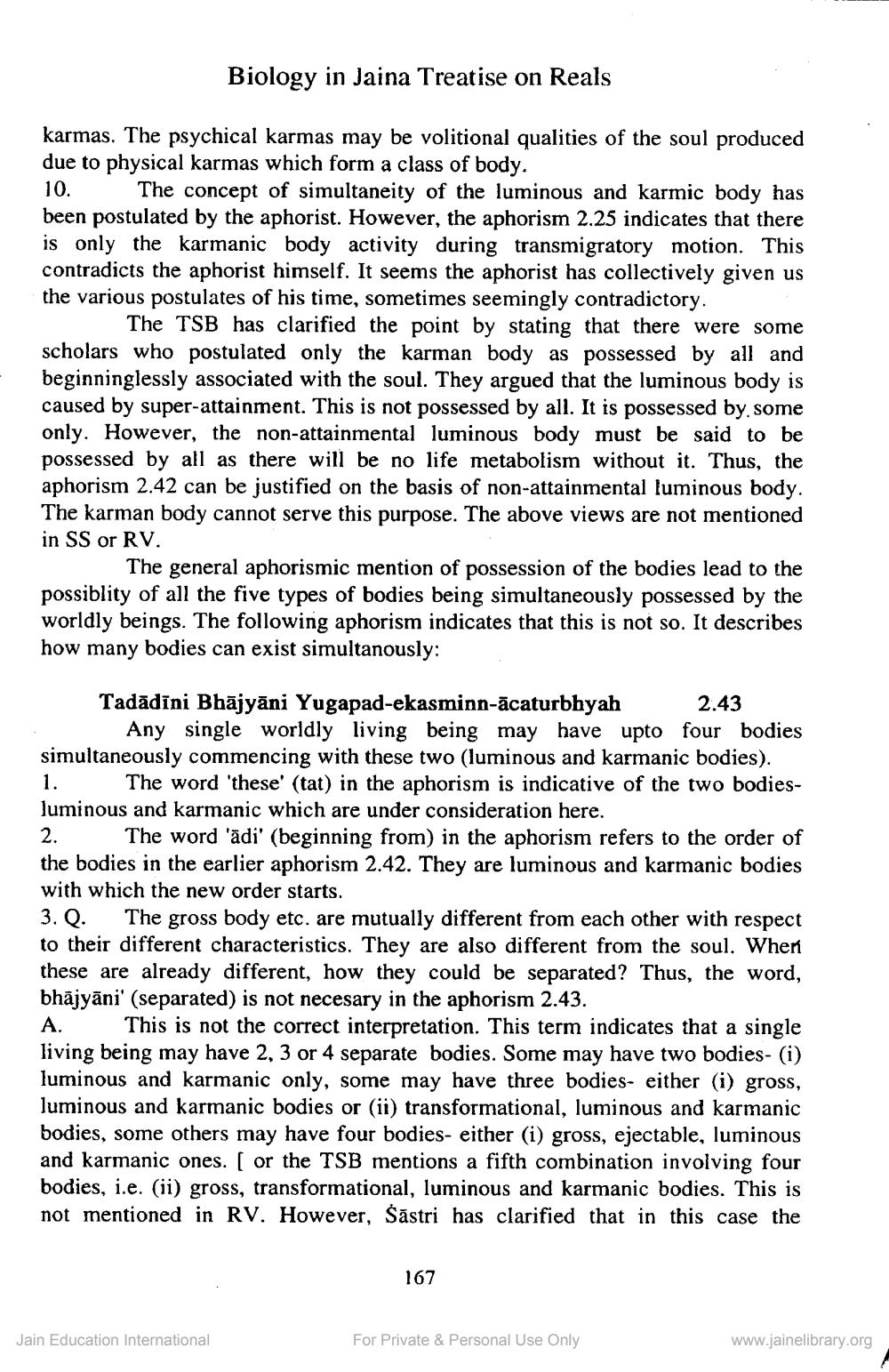________________
Biology in Jaina Treatise on Reals
karmas. The psychical karmas may be volitional qualities of the soul produced due to physical karmas which form a class of body. 10. The concept of simultaneity of the luminous and karmic body has been postulated by the aphorist. However, the aphorism 2.25 indicates that there is only the karmanic body activity during transmigratory motion. This contradicts the aphorist himself. It seems the aphorist has collectively given us the various postulates of his time, sometimes seemingly contradictory.
The TSB has clarified the point by stating that there were some scholars who postulated only the karman body as possessed by all and beginninglessly associated with the soul. They argued that the luminous body is caused by super-attainment. This is not possessed by all. It is possessed by some only. However, the non-attainmental luminous body must be said to be possessed by all as there will be no life metabolism without it. Thus, the aphorism 2.42 can be justified on the basis of non-attainmental luminous body. The karman body cannot serve this purpose. The above views are not mentioned in SS or RV.
The general aphorismic mention of possession of the bodies lead to the possiblity of all the five types of bodies being simultaneously possessed by the worldly beings. The following aphorism indicates that this is not so. It describes how many bodies can exist simultanously:
Tadādīni Bhājyāni Yugapad-ekasminn-ācaturbhyah 2.43
Any single worldly living being may have upto four bodies simultaneously commencing with these two (luminous and karmanic bodies). 1. The word 'these' (tat) in the aphorism is indicative of the two bodiesluminous and karmanic which are under consideration here. 2. The word 'ādi' (beginning from) in the aphorism refers to the order of the bodies in the earlier aphorism 2.42. They are luminous and karmanic bodies with which the new order starts. 3. Q. The gross body etc. are mutually different from each other with respect to their different characteristics. They are also different from the soul. When these are already different, how they could be separated? Thus, the word, bhājyāni' (separated) is not necesary in the aphorism 2.43. A. This is not the correct interpretation. This term indicates that a single living being may have 2, 3 or 4 separate bodies. Some may have two bodies- (i) luminous and karmanic only, some may have three bodies- either (i) gross, luminous and karmanic bodies or (ii) transformational, luminous and karmanic bodies, some others may have four bodies- either (i) gross, ejectable, luminous and karmanic ones. ( or the TSB mentions a fifth combination involving four bodies, i.e. (ii) gross, transformational, luminous and karmanic bodies. This is not mentioned in RV. However, Săstri has clarified that in this case the
167
Jain Education International
For Private & Personal Use Only
www.jainelibrary.org




